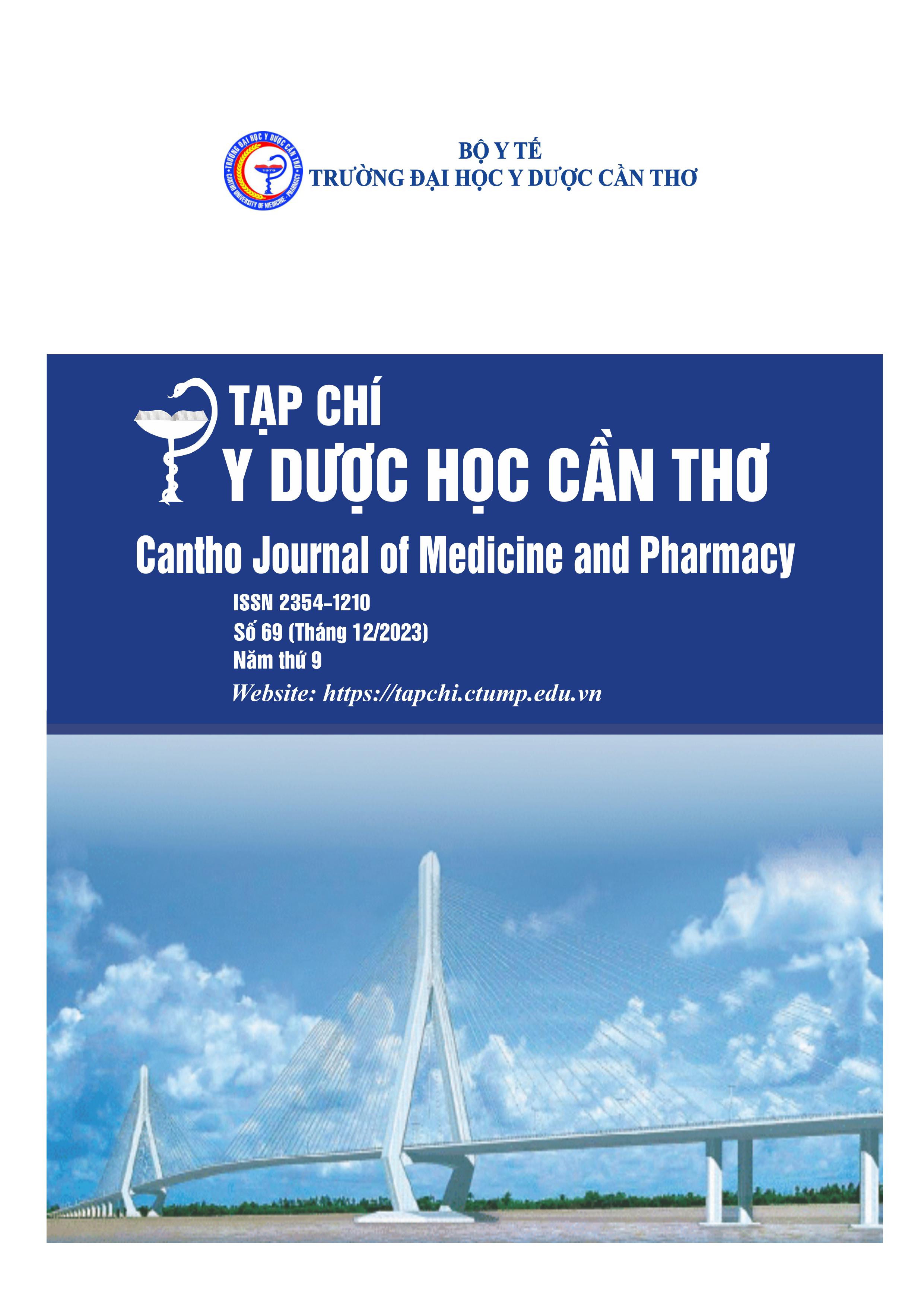MENTAL HEALTH STATUS OF HEALTHCARE WORKERS IN HOSPITALS OF CAN THO CITY
Main Article Content
Abstract
Background: Stress, anxiety, and depression are common mental health conditions across all ages, genders, and occupations. Medical staff has to shoulder a lot of work, high work intensity, and face many serious illnesses. Being constantly under work pressure can cause health workers to pose mental health problems, affecting the quality of patient care. Objectives: To determine the prevalence of stress, anxiety, depression, and some related factors of healcare workers in hospitals of Can Tho city. Materials and methods: A cross-sectional study was conducted in 472 healcare workers in hospitals of Can Tho city. They were interviewed through a self-completed questionnaire according to the depression, anxiety, and stress scale (DASS-21). Results: The prevalence of stress, anxiety, and depression was 10.2%; 12.9%; 8.5%, respectively; almost mild and moderate levels. 4.4 % of medical employees had three states. Frequently being complained about, destroyed, and assaulted by sick people, and family members; exposure to sharp objects, microorganisms in the process of working types of work increases the risk of stress, anxiety, and depression, there were no differences between disturbance levels with gender or educational level. Conclusion: Risk factors for stress, anxiety, and depression among nurse should be sought for early detection.
Article Details
Keywords
Stress, medical employees, DASS-21
References
27], [cited Jan 2021 09], Available from: URL: https://www.who.int/campaigns/world-mentalhealth-day/world-mental-health-day-2020/world-mental-health-day-campaign. 2020.
2. Siddaway A. P. , Wood A. M. and Taylor P. J., The Center for Epidemiologic StudiesDepression (CES-D) scale measures a continuum from well-being to depression: Testing two key predictions of positive clinical psychology, Journal of Affective Disorders, 2017, Vol 213, 180-186, DOI:10.1016/j.jad.2017.02.015.
3. Lê Thị Thanh Xuân, Stress nghề nghiệp của nhân viên y tế lâm sàng tại bệnh viện Đại học Y Hà Nội năm 2017, Tạp chí nghiên cứu Y học, 2020. Tập 129, số 5, 8-13.
4. Nguyễn Mạnh Tuân và cộng sự, Stress, trầm cảm, lo âu của nhân viên y tế Bệnh viện Trưng Vương năm 2018, Tạp chí Y học thành phố Hồ Chí Minh, 2018, Tập 22, số 6, 71-79.
5. Thach Duc Tran, Tuan Tran, Jane Fisher, Validation of the depression anxiety stress scales (DASS- 21) as a screening instrument for depression and anxiety in a rural community-based cohort of northern Vietnamese women, BMC Psychiatry, 2013, Vol 13, 13- 24, doi.org/10.1186/1471-244X-13-24.
6. Lovibond S.H , Lovibond P.F, Manual for the Depression Anxiety Stress Scales. (2nd. Ed.), Sydney: Psychology Foundation. 1995.
7. Anh Ngoc Nguyen, Xuan Le Thi Thanh , Hue Le Thi, Occupational stress among health worker in a National Dermatology hospital in Vietnam, 2018, Frontiers in Prychiatry, 2020. Vol 10 (950), 1-6, doi.org/10.3389/fpsyt.2019.00950.
8. Bùi Thị Duyên và Đặng Lê Trí. Tình trạng stress nghề nghiệp và các yếu tố liên quan của nhân viên y tế các khoa sàng bệnh viện đa khoa Medltec năm 2020, Tạp chí Y học cộng đồng, Viện sức khỏe cộng đồng, 2021, Tập 64, số 3, 19-26, doi https://doi.org/10.52163/yhc.v62i3%20(2021).38.
9. Nguyễn Thị Thanh Hương, Huỳnh Ngọc Vân Anh, Tô Gia Kiên, Stress nghề nghiệp và các yếu tố liên quan ở nhân viên y tế Bệnh viện Tâm thần Trung ương 2, Tạp chí Y học Thành phố Hồ Chí Minh, 2019, Tập 23, số 5, 242-250.


